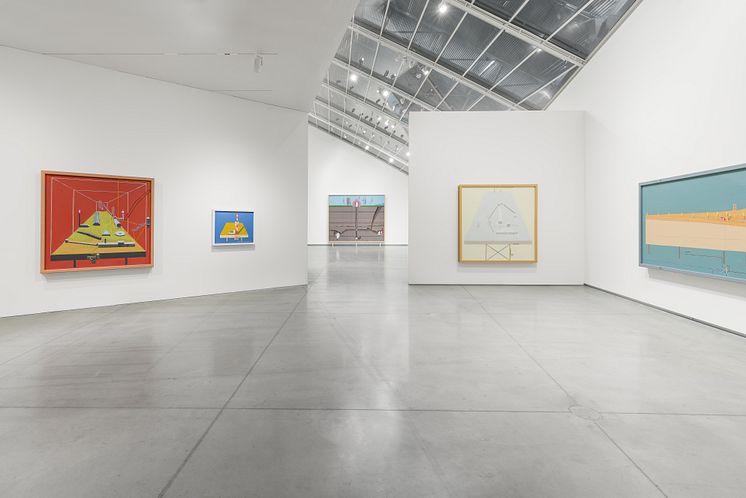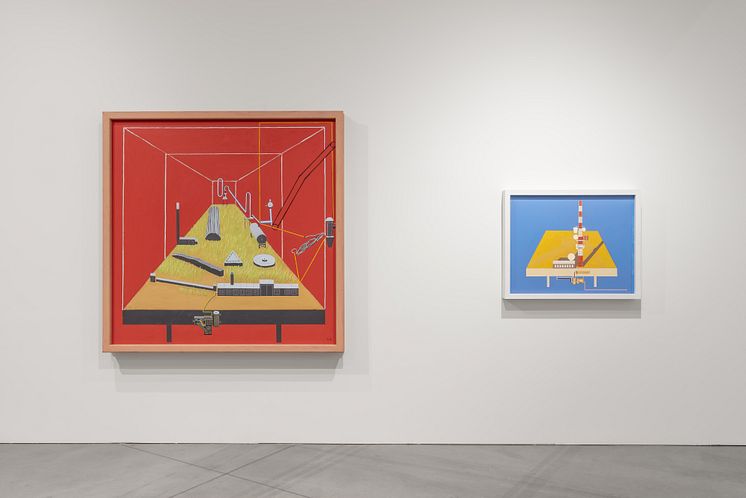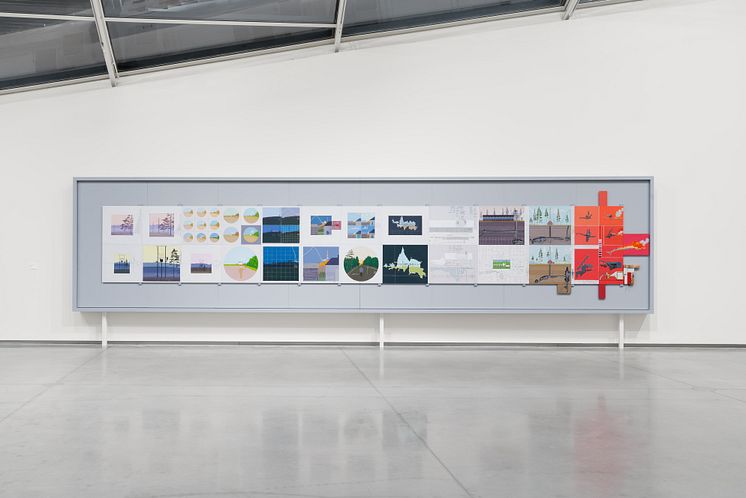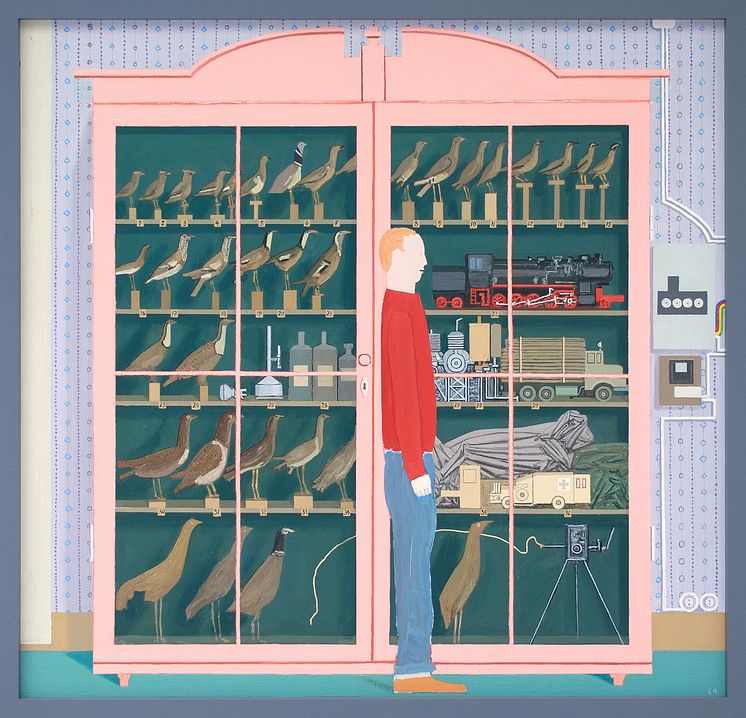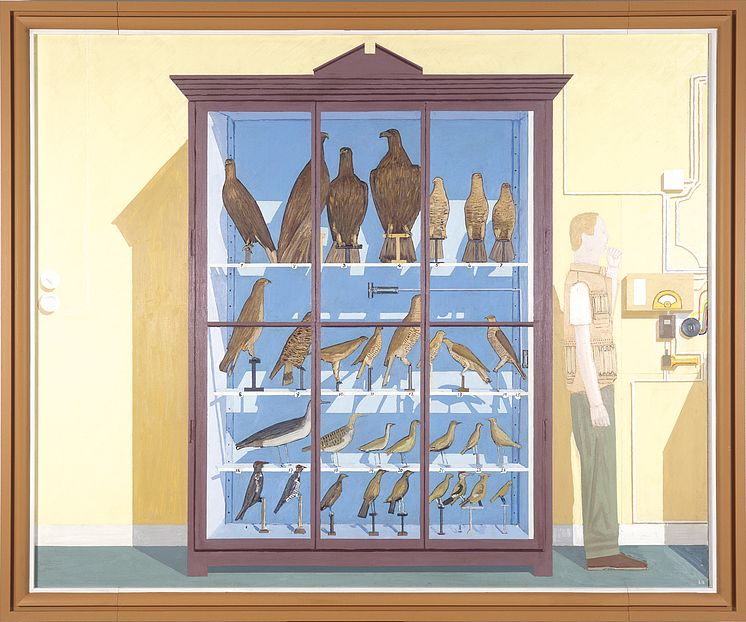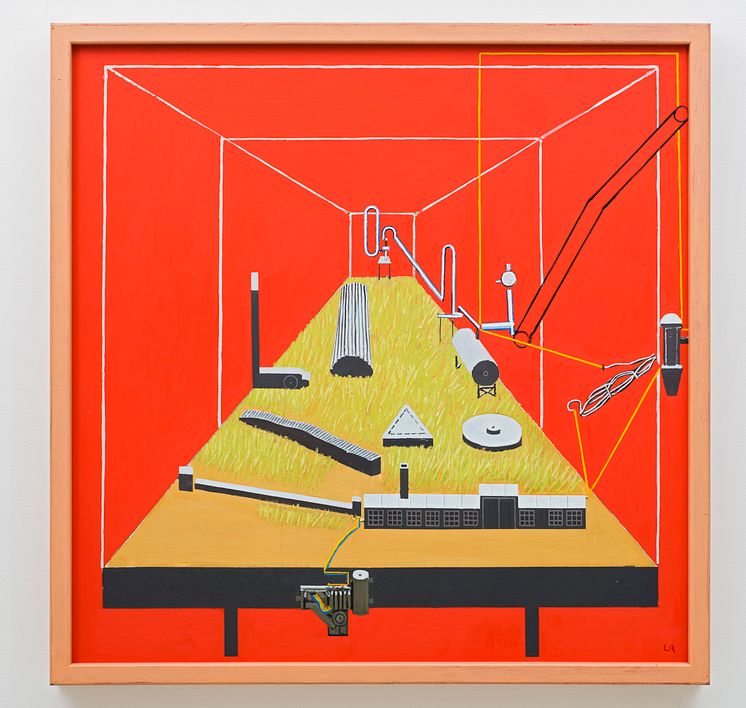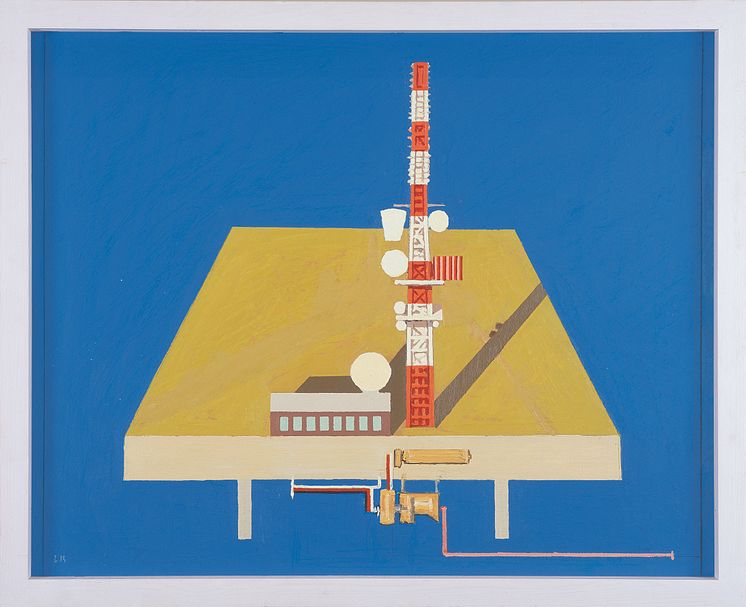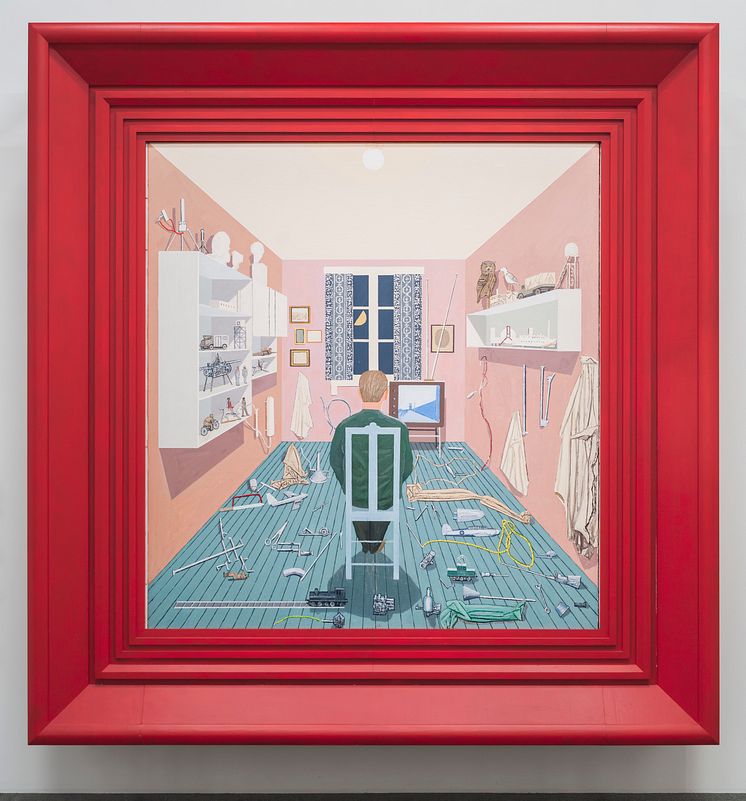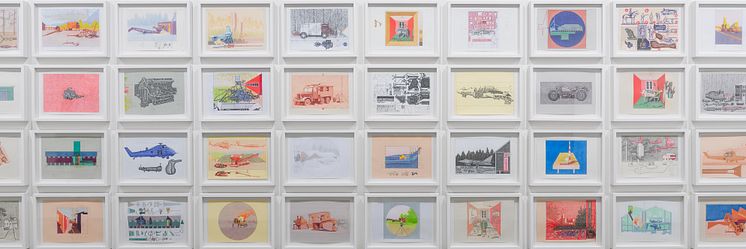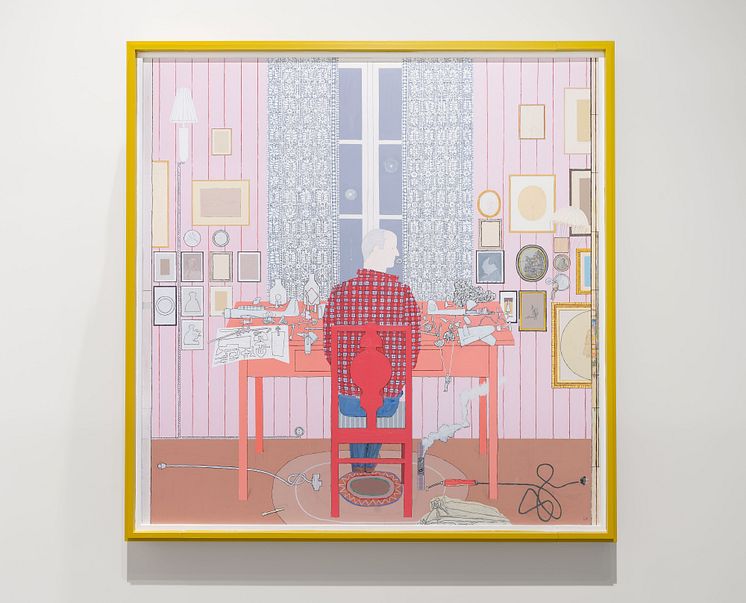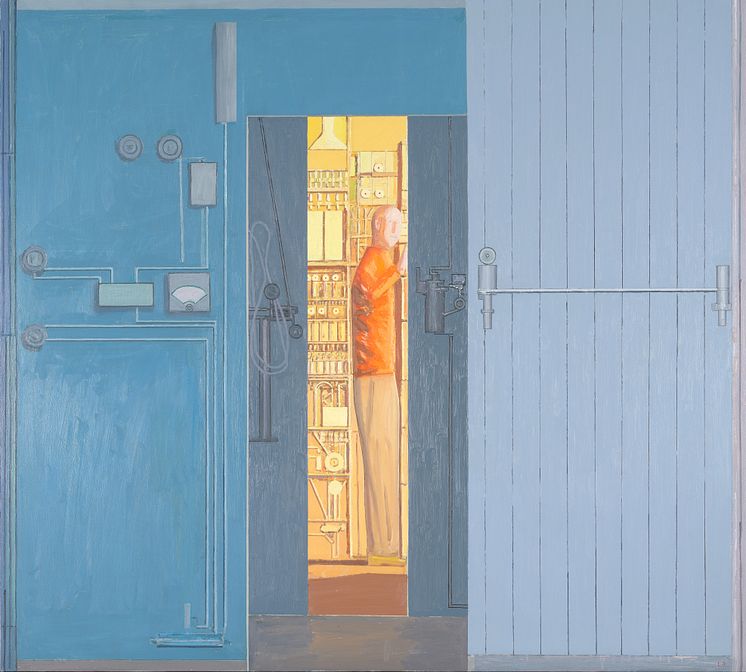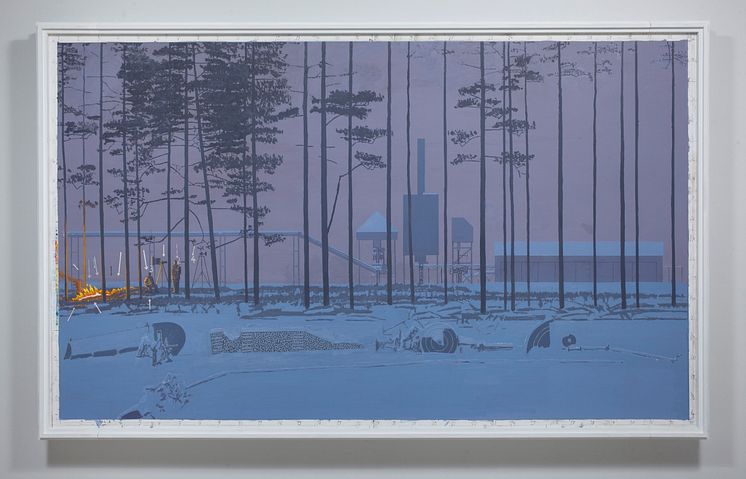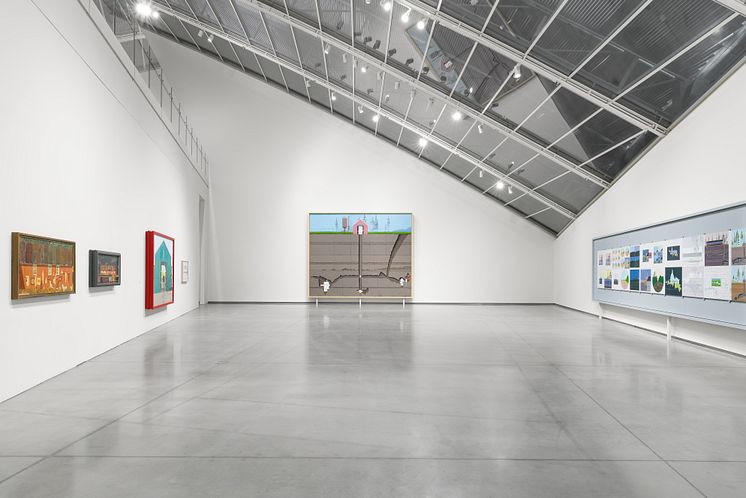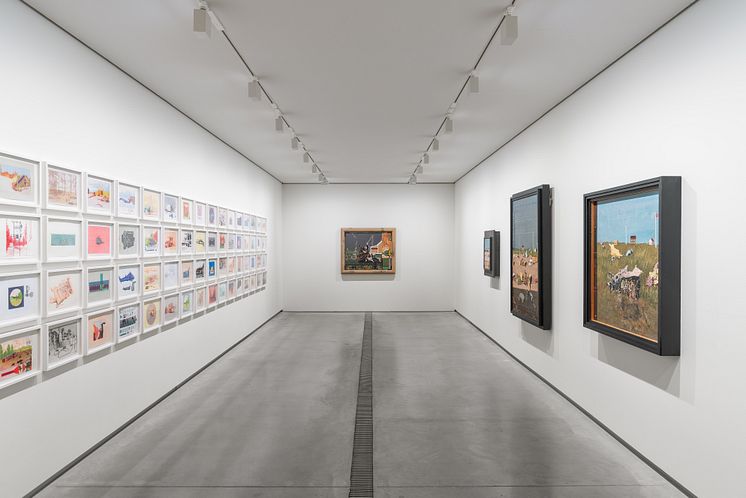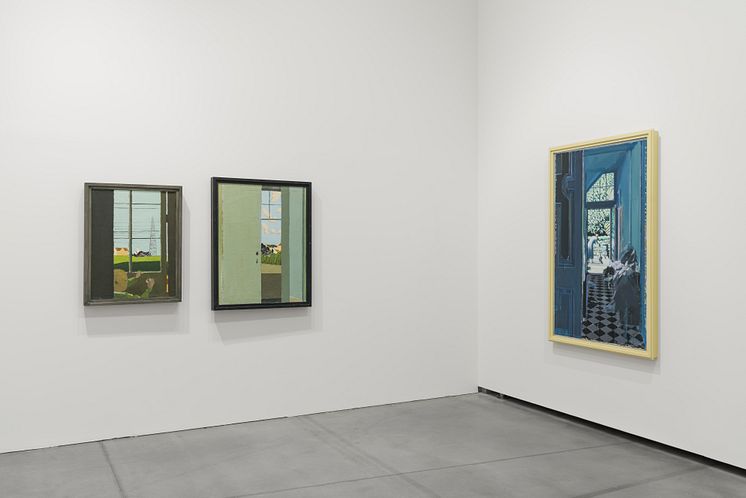
Press release -
Leonard Rickhard, Between Construction and Collapse
Leonard Rickhard
Between Construction and Collapse
26 January – 19 May 2024
Astrup Fearnley Museet’s first exhibition of 2024 is devoted to the painter Leonard Rickhard. Over a long artistic career, Rickhard cultivated a distinctive, easily recognizable style—a visual signature that is all its own within recent Norwegian art history. For the public, and for a younger generation of artists, Rickhard’s visual universe remains a point of reference and a continuous source of inspiration.
This exhibition—which includes more than 80 works—reviews an artistic practice spanning half a century, while showing how Rickhard has tirelessly pursued his project as a painter well into its sixth decade. The exhibition provides a rare opportunity to experience the full breadth of Rickhard’s body of work, including several first renderings of familiar motifs such as interiors, studies of railway carriages and car wrecks, and evocative landscapes. Among the most recent works are two new versions of the model plane constructor, a motif Rickhard has returned to for over forty years, as well as a monumental, site-specific painting, which will be the most ambitious he’s ever created.
The title, Between Construction and Collapse, points to an underlying gravity in Rickhard’s works. Many of his paintings constitute a means to process memories—often personal recollections from the artist’s childhood in the immediate aftermath of World War II. As such, the paintings have a psychological dimension, perhaps manifested through a vibrating ambience where the unsaid and unspoken, rather than the expressly political, takes center stage. However, the paintings can also be read as the processing of collective memory—expressing a shared unease and fear rooted in how war encroaches upon otherwise commonplace situations.
Rickhard presents us with painstakingly constructed images. These images do not provide simple answers; instead, they invite us to slow down our encounters with them. In this way, his paintings form a counterweight to the media-saturated image culture in which we are immersed. There is also an insistent quality to his dedication to the discipline of painting and the exploration of its infinite possibilities. Rickhard adheres to painting as an important visual medium. The repetition of the same motifs—the same images—is part of this. In an era of ephemeral and fleeting images, where their veracity is increasingly called into question and where the barrage of visual content is totally overwhelming, Rickhard insists that some images deserve sustained attention. They deserve to be returned to and explored yet again.
Since the mid-1970s, Rickhard has repeated several subjects over and over in his paintings. The bird cabinet, the night painter, the model table, the birch forest, deserted barracks, and workers’ sheds all appear in his paintings multiple times throughout his career. The exhibition takes as its point of departure this iterative aspect of Rickhard’s body of work, shedding light on how the artist keeps returning to these recurring scenes. Through a sequence of adjacent galleries, the exhibition highlights and delves into an iconic selection of motifs. Thus, each gallery will contribute to the dissolution of a linear reading of the artist’s career, demonstrating instead how Rickhard has worked with recurring motifs, themes, and visual strategies in parallel throughout his entire body of work.
Time occupies a particular place in Rickhard’s visual universe. Although many of his motifs belong to a fixed point in history and are placed in a specific geographical landscape—namely, southern Norway early in the post-World War II years—the images are also remarkably timeless, isolated from the hallmarks of any given time. This is in part what gives Rickhard’s paintings their rich and complex character—even when subject to repeated encounters in new exhibitions.
In connection with the exhibition, Astrup Fearnley Museet is working on an extensive monograph on Leonard Rickhard, co-edited by Solveig Øvstebø and Steinar Sekkingstad, and with contributions from Norwegian and international writers, among them Barry Schwabsky, Sabeth Buchmann, and Sinziana Ravini.
Curated by Solveig Øvstebø.
Leonard Rickhard (1945–2024) lived and worked in Arendal, Norway. He was educated at the National Academy of Applied Arts and the National Academy of Fine Arts (Oslo, Norway, 1966–1972). Earlier solo exhibitions include, among others, Trondheim Kunstmuseum (2020), ARoS (2016), Bomuldsfabriken Kunsthall (2012), Festspillutstillingen, Bergen Kunsthall (2009), Sørlandet Kunstmuseum (2005), Astrup Fearnley Museet (2001), and Lillehammer Kunstmuseum (1996). On January 7, 2024, Leonard Rickhard sadly passed away at the age of 78 following a short illness. With his passing, Norway lost one of its foremost artists.
